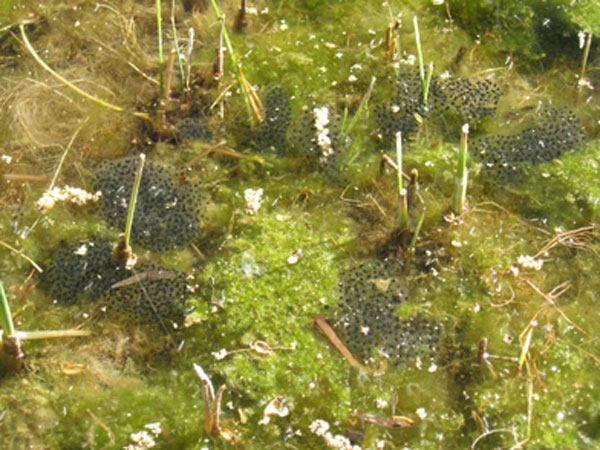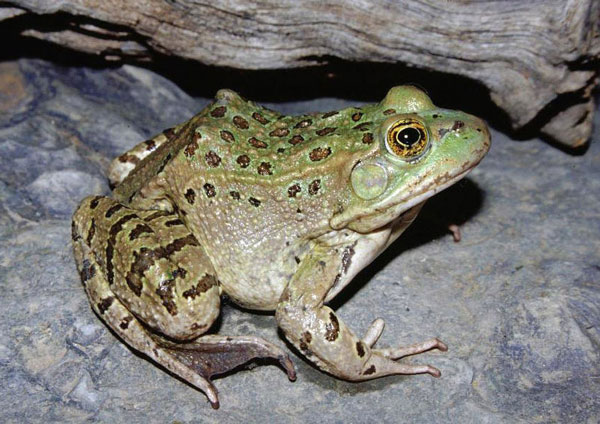Ten Chiricahua leopard frog egg masses were found at the Eastern Arizona College Discovery Park Ranarium.
Ten Chiricahua leopard frog (Lithobates chiricahuensis) egg masses were discovered at the Eastern Arizona College Discovery Park Ranarium by a college biology instructor who was testing the ranarium's water chemistry. Eastern Arizona College biology instructor Dave Henson discovered 10 Chiricahua leopard frog egg masses, each containing an estimated 300 to 500 eggs.

Photo by Eastern Arizona College
Ten Chiricahua leopard frog egg masses were found at the Eastern Arizona College Discovery Park Ranarium.
According to the Eastern Arizona Courier, Arizona Department of Game and Fish frog specialist Abi King came out and took seven of the egg masses and relocated them, but it looks like the remaining three egg masses will remain in place until the end of summer, giving the eggs the chance to change into tadpoles and then young froglets, King said. Then they will be relocated into the wild where there is enough water to sustain them. Usually, the egg masses are immediately transplanted to a riparian habitat in the Galiuro Mountains or the Bubbling Springs Hatchery near Sedona, AZ.

Photo by Jim Rorabaugh/USFWS.
Chiricahua leopard frog.
The frog, which is listed as vulnerable by the IUCN is native to Arizona, New Mexico and Mexico. It can be found in temperate forests, rivers, swamps, freshwater lakes and marshes, as well as springs and ponds. It is threatened by both habitat loss and the chytrid fungus, with some estimating that it has been eliminated from 80 percent of its native habitat.


